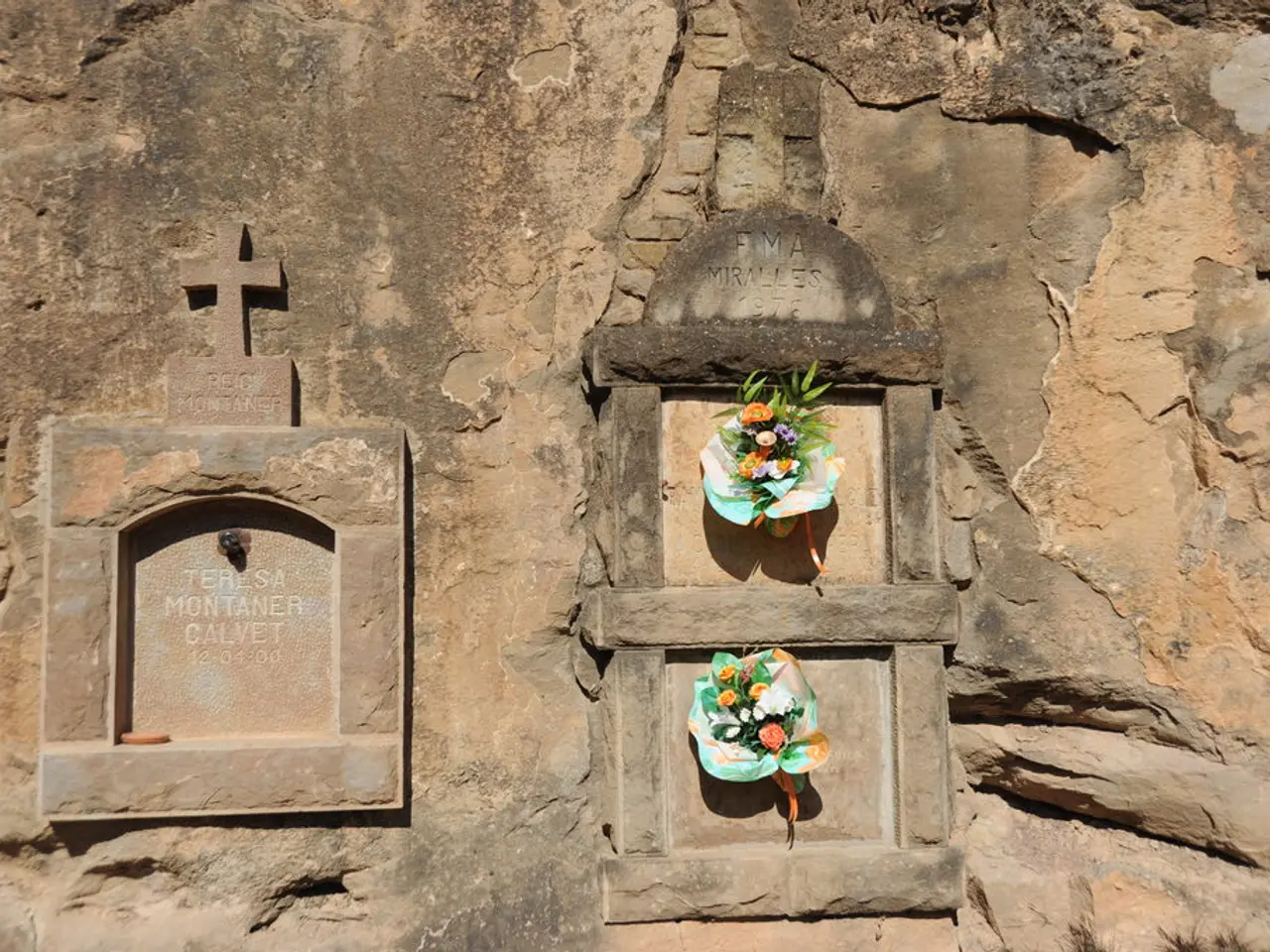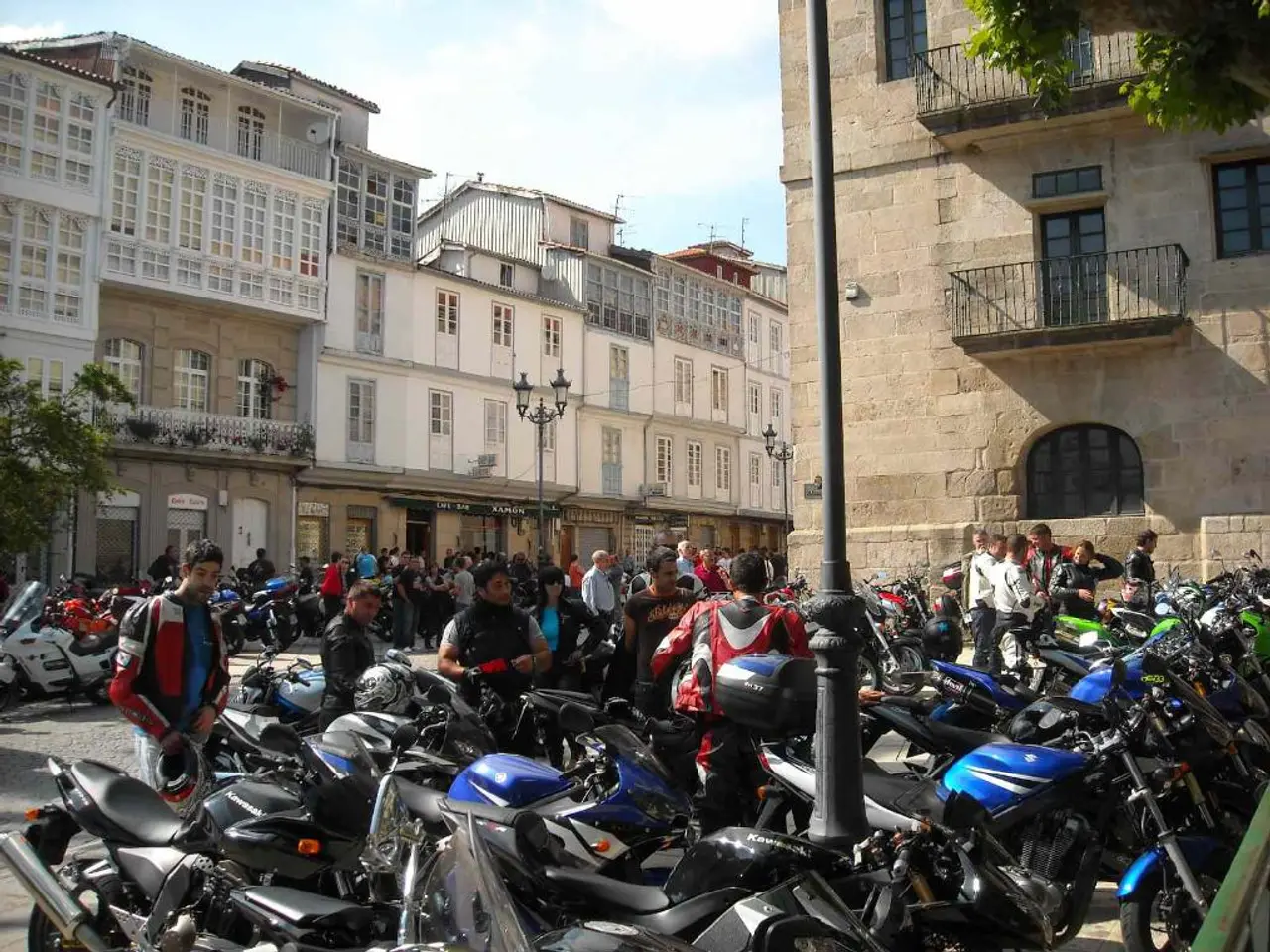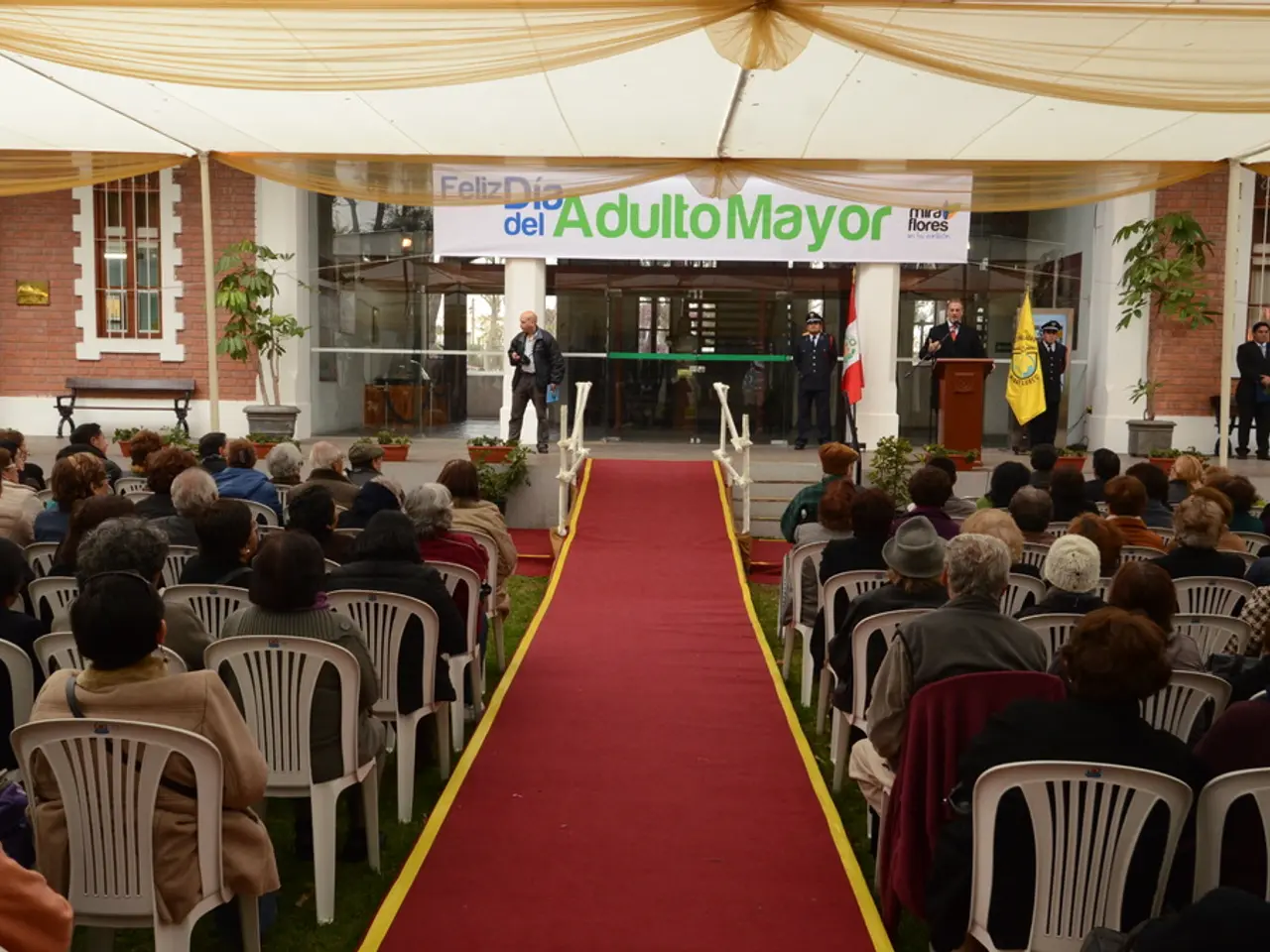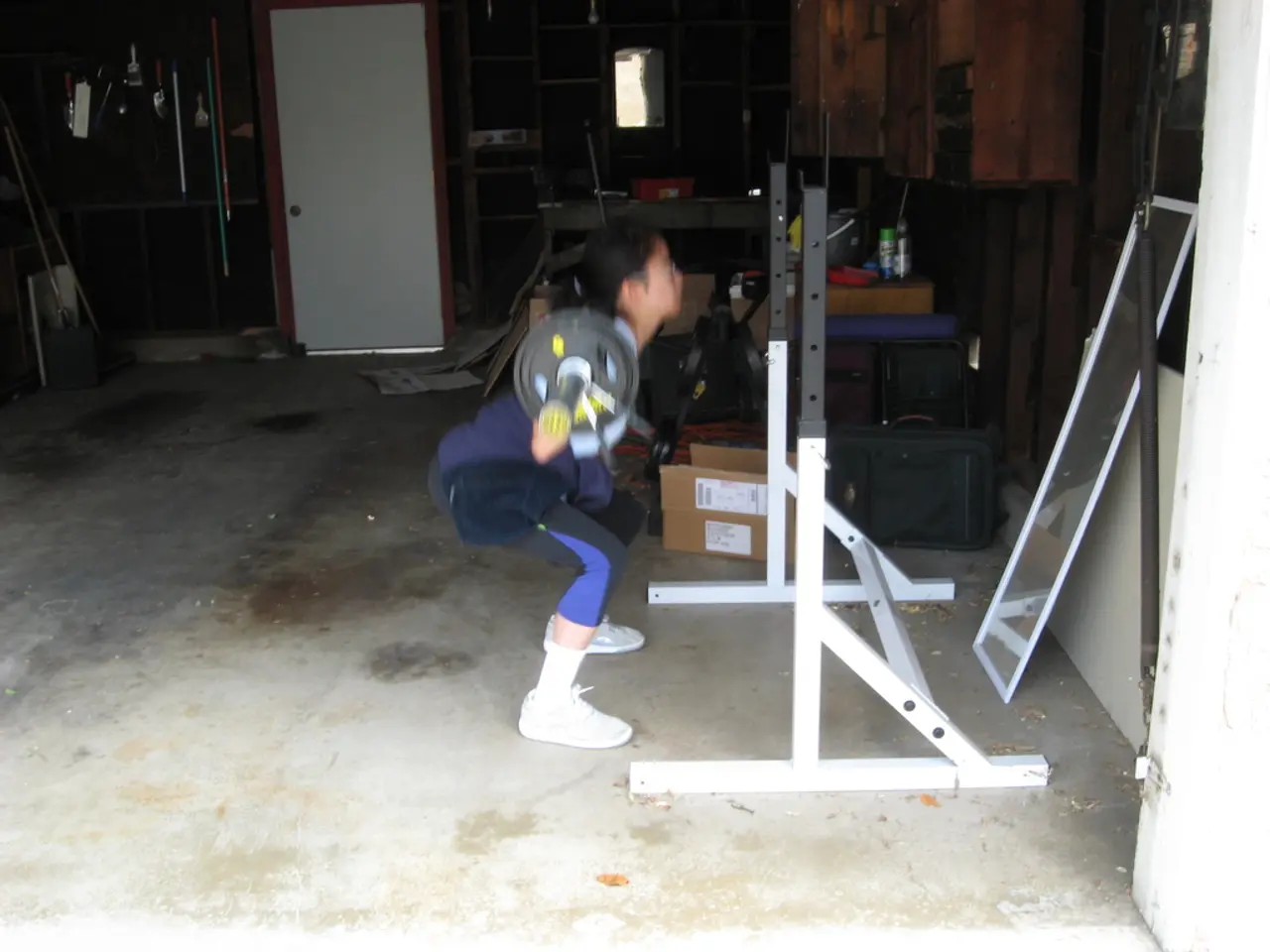"The memorial claims ownership of the graveyard"
In the quaint town of Stukenbrock, Germany, stands a poignant reminder of a dark chapter in history. The Soviet Soldier Cemetery, home to an obelisk and 36 memorial stones, commemorates the approximately 65,000 Soviet prisoners of war who lost their lives during World War II and are buried in 36 mass graves nearby, in the Sennesand[1][2].
The obelisk, a tall, slender monument, serves as a focal point of sacrifice and loss. It symbolizes the prisoners' resistance against the fascist system, their will to survive, and their struggle for resilience[1][2]. Erected by the survivors of the camp, the obelisk is a testament to the human spirit's indomitable nature, even in the face of adversity.
The memorial stones, placed before the mass graves, mark the anonymous victims with dignity and respect. They ensure that the memory of these soldiers, who perished due to starvation, disease, and execution, is preserved[1][2].
The cemetery and its monuments are historically significant, not only as a war burial ground but also as a memorial to the suffering of Soviet prisoners. They contribute to the broader understanding of POW treatment in World War II and the memory of Soviet-German wartime history.
Werner Höner, a notable figure, has stated that the obelisk is a significant symbol of remembrance. It stands as a reminder of a politics of peace and humanity, a poignant contrast to the harsh conditions and high mortality rates endured by the Soviet POWs[1][2].
The obelisk in Stukenbrock is more than just a monument; it is a beacon of hope, a symbol of resilience, and a testament to the human spirit's capacity to endure and remember. It serves as a solemn reminder of the tragic human cost of war and the violation of international law, particularly the Geneva Convention standards that were not upheld for Soviet prisoners during World War II.
[1] History of the Soviet Soldier Cemetery in Stukenbrock. (n.d.). Retrieved from https://www.stukenbrock.de/sowjetfriedhof/
[2] The Soviet Soldier Cemetery in Stukenbrock. (n.d.). Retrieved from https://www.soviet-war-cemetery.com/cemetery/stukenbrock.html
The obelisk, a reminder of peace and humanity in the face of adversity, is a significant symbol of politics in remembrance. It stands as a reminder of the general-news events of the harsh conditions and high mortality rates endured by the Soviet POWs.







